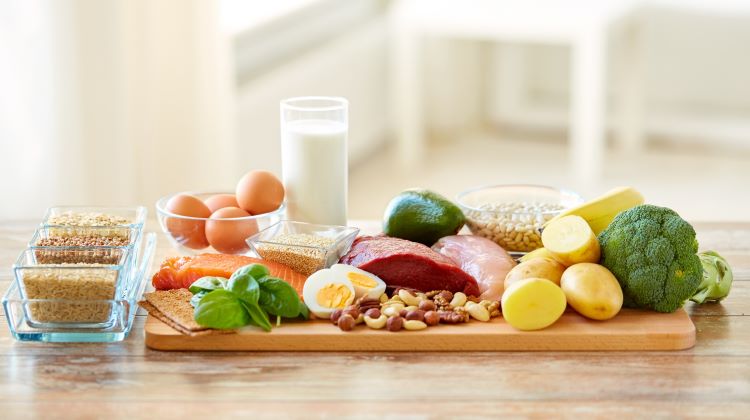High-Protein Foods: Meat, Farm Sources, Chicken and Beef
High-protein foods are central to many diets aimed at supporting muscle maintenance, satiety, and overall nutrition. Animal-based options such as chicken and beef provide concentrated sources of complete protein, while farm-produced items can include a wider mix of staples and secondary sources. Understanding differences in protein content, nutritional profiles, and practical food choices helps you build meals that meet daily protein goals without relying on supplements or making unsupported claims.

What role does meat play in protein intake?
Meat is a dense source of high-quality protein because it contains all essential amino acids in proportions the body needs. Typical serving sizes of common meats deliver significant amounts of protein alongside other nutrients such as iron, zinc, and B vitamins. When planning meals, consider lean cuts and cooking methods that preserve protein while limiting added fats, for example grilling, roasting, or broiling. Balancing portion size with other food groups helps maintain a nutritious pattern rather than focusing on protein alone.
How do farm-sourced foods differ in protein?
Farm-sourced foods encompass a variety of animal and plant products produced on farms, including eggs, dairy, legumes, and grains, in addition to meat from livestock. Protein density can vary: eggs and dairy are concentrated animal proteins, while legumes and whole grains provide plant proteins that are often lower in one or more essential amino acids. Combining complementary plant foods across the day can achieve a complete amino-acid profile. Farm practices also influence nutrient density, but labeling and verified claims should be checked for specifics.
Which food options supply complete protein?
Complete proteins contain all essential amino acids and are commonly found in animal-derived foods: meat, poultry, fish, eggs, and dairy. Among plant-based options, soy and quinoa are notable as complete sources. For mixed diets, combining different food groups—such as beans with rice or nuts with whole grains—provides complementary amino acids. Paying attention to portion sizes and frequency helps meet recommended daily protein intakes, which vary by age, activity level, and health status.
How does chicken compare as a protein source?
Chicken is often chosen for its relatively high protein-to-calorie ratio and versatility in cooking. A typical cooked chicken breast offers a substantial protein yield with lower saturated fat than some red meats when skin is removed. Chicken works well in a range of preparations—stir-fries, baked dishes, or salads—making it easy to add consistent protein to meals. Handling and storage practices should follow food-safety guidance to reduce the risk of contamination.
How does beef fit into a high-protein diet?
Beef provides concentrated protein as well as micronutrients such as heme iron and vitamin B12 that are less abundant in some plant foods. Different cuts yield different fat and calorie profiles: leaner cuts like sirloin or round deliver protein with less saturated fat than fattier cuts. Cooking methods that drain excess fat and choosing appropriate portion sizes can help incorporate beef into a balanced, protein-focused diet. Consumers may consider variety—alternating between beef, poultry, fish, eggs, and plant proteins—to diversify nutrient intake.
This article is for informational purposes only and should not be considered medical advice. Please consult a qualified healthcare professional for personalized guidance and treatment.
High-protein meal planning benefits from practical considerations beyond nutrient composition. Preparing batches of cooked chicken or lean beef, keeping portion-controlled servings on hand, and combining protein with vegetables and whole grains supports satiety and nutrient balance. Label reading helps identify added ingredients and sodium levels in processed meat products; fresh cuts and minimally processed options generally give clearer information about protein content per serving.
Selecting protein sources can also involve environmental, ethical, and local-farming considerations. If sourcing from farms or local producers in your area, look for transparent information about animal welfare, feed, and production methods. These factors do not change the basic protein content but may influence personal choices and priorities when building a high-protein food plan.
High-protein diets can suit a variety of goals, from supporting athletic training to addressing age-related muscle loss, but individual needs differ. Focus on a mix of complete proteins, varied food sources, and sensible portion sizes rather than overemphasizing any single food. Monitoring overall diet quality—fiber, vitamins, minerals, and healthy fats—helps ensure that a higher protein intake contributes to long-term nutritional balance.
In summary, meat, chicken, and beef are reliable high-protein foods that supply complete amino acids and important micronutrients. Farm-sourced foods broaden options with both animal and plant proteins. Thoughtful selection, preparation, and variety allow you to meet protein needs while maintaining a balanced diet tailored to personal health goals.






